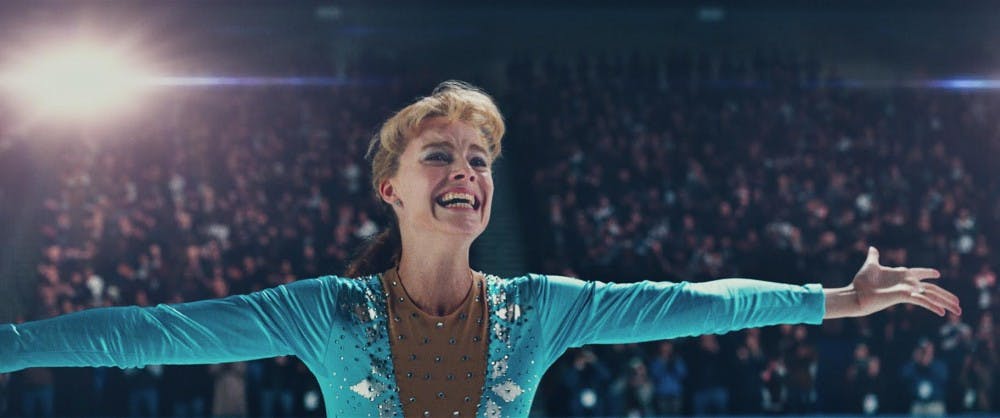Tonya Harding was never one of my childhood villains. Before my time, too washed-up to matter, Harding was the face of a vague scandal of my parents' generation and an occasional commentator on truTV’s “World’s Dumbest…” So it’s fair to say that my first legitimate exposure to the Harding-Kerrigan incident was the movie “I, Tonya,” currently playing at the Nickelodeon Theatre. It is from this fresh, untainted perspective that I watched the Olympic skater’s life unfold.
Rather than focusing solely on the incident in which Harding’s biggest competitor got clubbed in the knee — at the direction of Harding’s ex-husband — “I, Tonya” showed me a young Harding crying for her father, getting beaten by her mother and skating like a champion.
It is clear from the onset that Craig Gillespie’s “I, Tonya” sets out to humanize a woman who the public so readily villainized. We see the young Harding being deeply affected by poverty and an abusive mother, both of which are legitimate roots of her future controversy and poor decisions. As an adult, Harding, played by Margot Robbie, eventually leaves her childhood home for her physically abusive boyfriend Jeff Gillooly.
But when she skates, Harding is a queen. On the ice, Harding feels loved.
The film is, in its essence, intentionally confusing. Its narrative framework is constructed by the satirical representation of real interviews — including Harding herself, her ex-husband Gillooly (Stan Sebastian) and her mother LaVona Golden (Allison Janney), all of whom are entirely unreliable.
This decision to propel the story with untrustworthy voices is ultimately what pushes “I, Tonya” past being just a source of entertainment until it becomes something that matters. The camera movement itself is done in a way that pulls the audience with the story, as though we are following the characters from place to place, event to event. On multiple occasions, the characters look right through the screen, straight at the audience and tell us their thoughts or set the record straight on what did or didn’t happen. As an audience, we believe everybody and we believe nobody.
Margot Robbie, who also took part in producing the movie, admitted to this presentation of the “truth” as a gray area, rather than a clear-cut depiction of what actually happened.
“That’s kind of the cool thing about our script and the film, is that you kind of see everyone’s perspective on it, and it contradicts each other all the time,” she told ABC’s "Good Morning America."
The movie also challenges the audience in a more subtle manner by presenting certain threads and motifs that push us to think about social class and American culture. Harding and her mother, for example, consistently wear fur throughout the movie — a sign of their efforts to overcome poverty, to fit in with the sophisticated, wealthy people by whom they are constantly surrounded.
But despite her determination and grit, Harding never “makes it.” Her version of the truth is that America was against her long before Nancy Kerrigan’s knee was taken out. She didn’t get the scores she deserved because she couldn’t be a nice, clean face for her country simply because she wasn’t born into nice, clean circumstances.
Early on in the film, Harding is compared to America itself in that she is either loved or hated. Small American flags appear at desolate, difficult times through the story — like hanging from her porch as she leaves her husband. And in the end, Harding says what we all know: that America loves to have someone to hate. Harding is ultimately portrayed as yet another person failed by the elusive “American Dream.”
In these regards, “I, Tonya” is simultaneously sickening and comical, triumphant and heartbreaking. The film is complex and layered — but most things are. It reminds us that we, like Harding and the incident which haunts her, are all just a massive web of contradictions.

